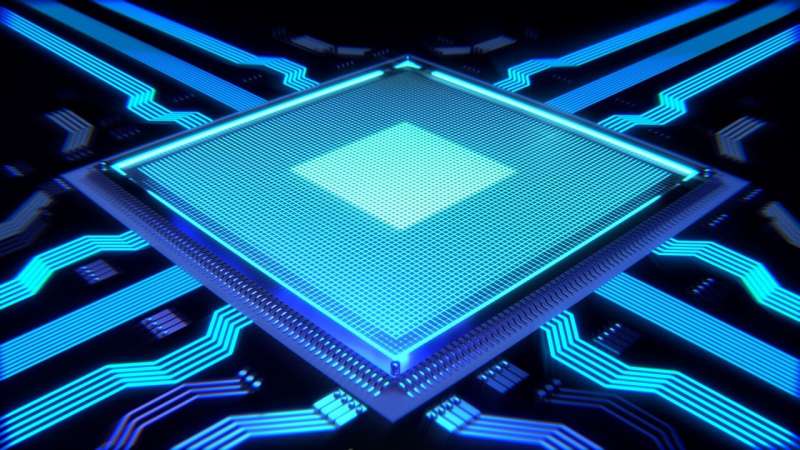Research takes electrons for a spin in moving toward more efficient, higher density data

Researchers at New York University and IBM Research have demonstrated a new mechanism involving electron motion in magnetic materials that points to new ways to potentially enhance data storage. The work, reported in the journal Physical Review Letters, unveils a process for setting the direction of the magnetic information, or spin, based on an electrical current.
The discovery stems from the scientific field of spintronics, which considers condensed matter and quantum physics. Spintronics is shorthand for electronics, or electrical devices, that use the electron's spin in addition to its electrical charge.
"One of the major goals of spintronics research is to control the direction of the spin of electrons in materials," explains Andrew Kent, a professor in NYU's Department of Physics and one of the paper's senior authors. "This research shows a new and fundamental mechanism for setting the electron spin direction in a conducting material."
"This advance in spintronics offers a novel way to exert torques on a magnetic layer," adds senior co-author Jonathan Sun of IBM Research and a visiting scholar at NYU. "It's a promising advance that has the potential to reduce energy and space requirements for device data storage."
The work, conducted with Junwen Xu, an NYU graduate student, and Christopher Safranski of IBM Research, is the latest example of a phenomenon central to the transmission of information: altering it from one form to another.
For instance, mobile phones convert voice and emails into radio waves that travel to cell phone towers where the signals are transformed into electrical ones while the internet transforms electrical signals into optical ones (i.e., light pulses) for long-distance transmission.
In the Physical Review Letters research, Safranski, Sun, Xu, and Kent focused on demonstrating a novel mechanism for the control of spin direction—the direction that controls the stored bits of information.
Historically, current flow in non-magnetic heavy metals has been shown to lead to spin polarization, or a direction of its net magnetic moment, at the surface of the conductor, an effect known as the spin Hall effect. However, the direction of the spin polarization in the spin Hall effect is always parallel to the surface of the conductor. This limits its applications because it provides only one possible axis of spin polarization, limiting storage density.
In the Physical Review Letters research, the scientists used the planar-Hall effect in a ferromagnetic conductor to control the orientation of the spin-polarization axis.
Specifically, they deployed a ferromagnetic conductor—iron, nickel, and cobalt are examples of such conductors—and found that current flow in the conductor can produce a spin polarization that is in a direction set by its magnetic moment. This is significant because the magnetic moment direction can now be set in just about any desired direction to then set the spin polarization—a flexibility not possible under the contours of the spin Hall effect in non-magnetic heavy metals.
They also found that these polarized spins travel outside the ferromagnetic layer and lead to a pure spin current—a spin current with no associated electrical current—in an adjacent non-magnetic metal. This phenomenon has the potential to enable a new generation of spin-controlled memory device for higher-density and more efficient memory technology.
More information: Christopher Safranski et al. Planar Hall Driven Torque in a Ferromagnet/Nonmagnet/Ferromagnet System. Phys. Rev. Lett. 124, 197204. Published 15 May 2020. DOI: 10.1103/PhysRevLett.124.197204
Journal information: Physical Review Letters
Provided by New York University




















